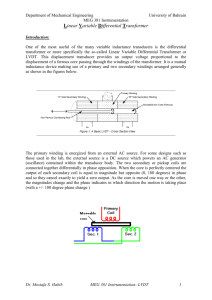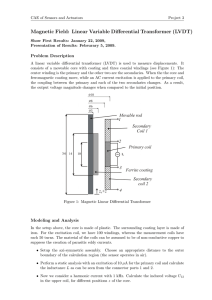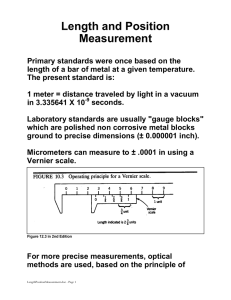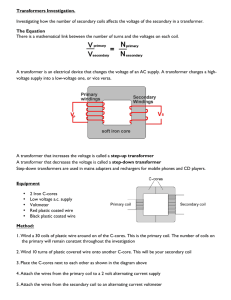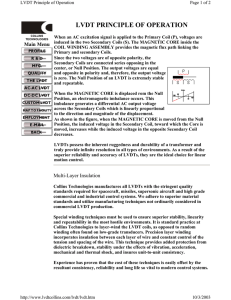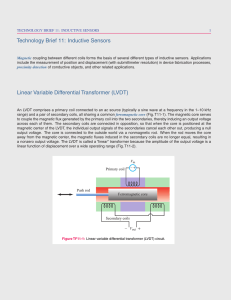Instrumentation Lab TERM 052
advertisement
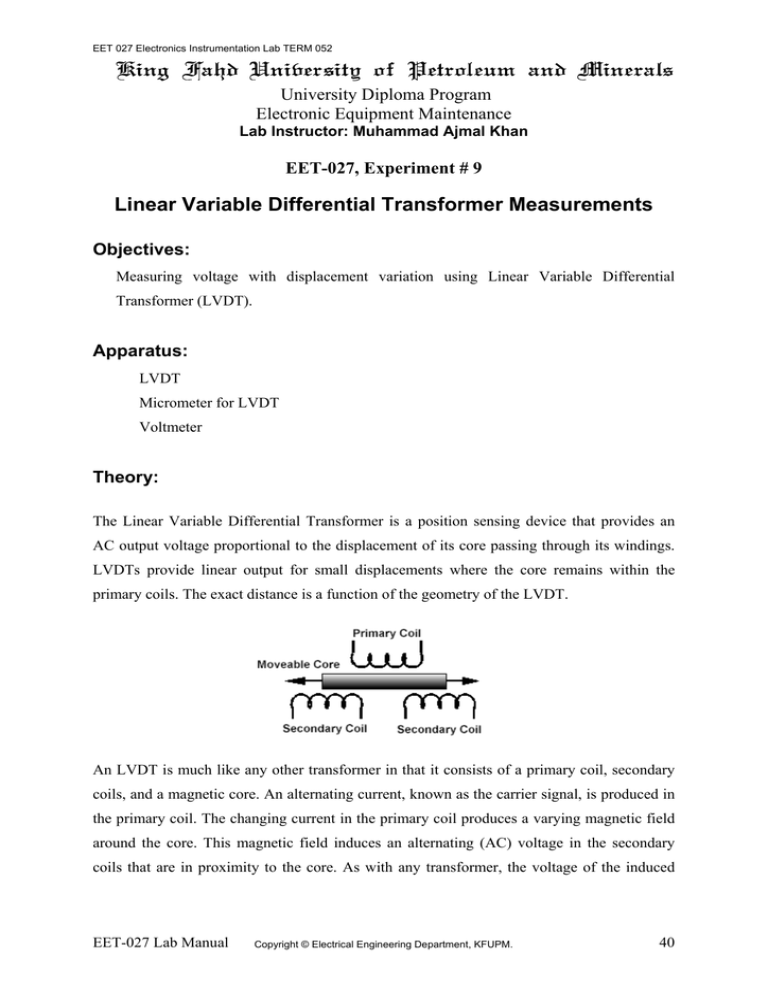
EET 027 Electronics Instrumentation Lab TERM 052 University Diploma Program Electronic Equipment Maintenance Lab Instructor: Muhammad Ajmal Khan EET-027, Experiment # 9 Linear Variable Differential Transformer Measurements Objectives: Measuring voltage with displacement variation using Linear Variable Differential Transformer (LVDT). Apparatus: LVDT Micrometer for LVDT Voltmeter Theory: The Linear Variable Differential Transformer is a position sensing device that provides an AC output voltage proportional to the displacement of its core passing through its windings. LVDTs provide linear output for small displacements where the core remains within the primary coils. The exact distance is a function of the geometry of the LVDT. An LVDT is much like any other transformer in that it consists of a primary coil, secondary coils, and a magnetic core. An alternating current, known as the carrier signal, is produced in the primary coil. The changing current in the primary coil produces a varying magnetic field around the core. This magnetic field induces an alternating (AC) voltage in the secondary coils that are in proximity to the core. As with any transformer, the voltage of the induced EET-027 Lab Manual Copyright © Electrical Engineering Department, KFUPM. 40 EET 027 Electronics Instrumentation Lab TERM 052 signal in the secondary coil is linearly related to the number of coils. The basic transformer relation is: where: Vout is the voltage at the output, Vin is the voltage at the input, Nout is the number of windings of the output coil, and Nin is the number of windings of the input coil. As the core is displaced, the number of coils in the secondary coil exposed to the coil changes linearly. Therefore the amplitude of the induced signal varies linearly with displacement. The LVDT indicates direction of displacement by having the two secondary coils whose outputs are balanced against one another. The secondary coils in an LVDT are connected in the opposite sense (one clockwise, the other counter clockwise). Thus when the same varying magnetic field is applied to both secondary coils, their output voltages have the same amplitude but differ in sign. The outputs from the two secondary coils are summed together, usually by simply connecting the secondary coils together at a common center point. At an equilibrium position (generally zero displacement) a zero output signal is produced. The induced AC signal is then demodulated so that a DC voltage that is sensitive to the amplitude and phase of the AC signal is produced. EET-027 Lab Manual Copyright © Electrical Engineering Department, KFUPM. 41 EET 027 Electronics Instrumentation Lab TERM 052 Procedure: 1. Connect the LVDT with the micrometer. 2. Connect the Voltmeter with the LVDT signal conditioner. 3. Connect the LVDT signal conditioner with the power supply of 110 Volts. 4. Set the position of LVDT such that a range of voltage from +10 to -10 volts can be achieved. 5. Change the LVDT displacement and record the voltmeter reading in the table. 6. Plot the graph voltage versus displacement. Table 1 S. No. 1 Displacement (inch) Resultant Displacement (x-a) (inch) Voltage (Volts) a= 2 3 4 5 6 7 8 9 10 11 12 13 EET-027 Lab Manual Copyright © Electrical Engineering Department, KFUPM. 42 EET 027 Electronics Instrumentation Lab TERM 052 Conclusions: EET-027 Lab Manual Copyright © Electrical Engineering Department, KFUPM. 43
